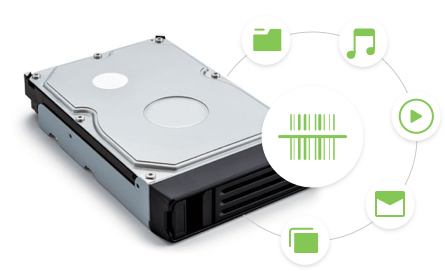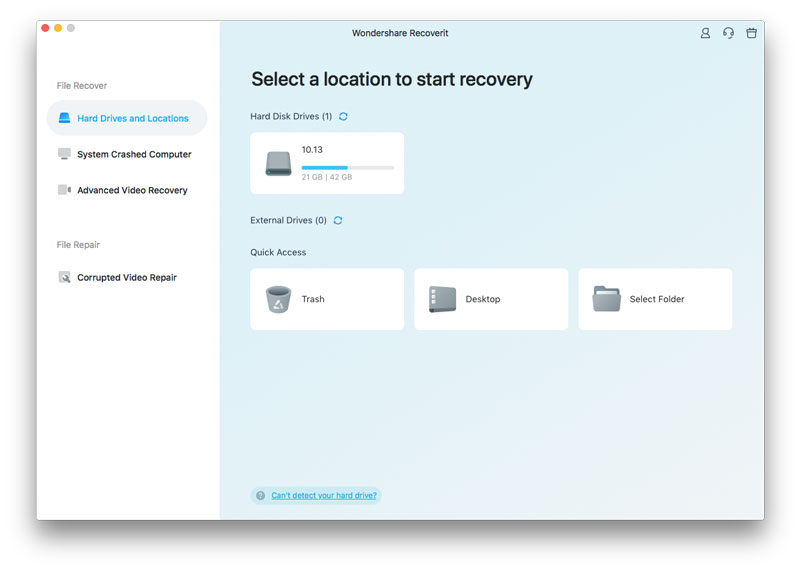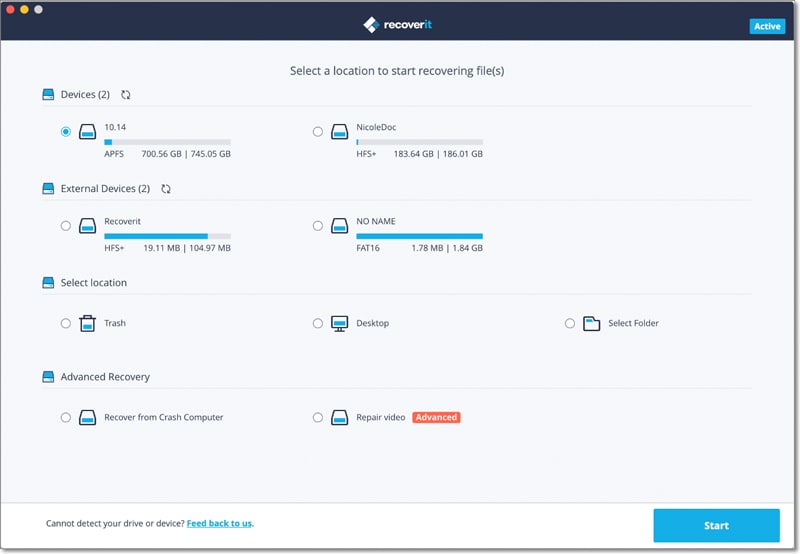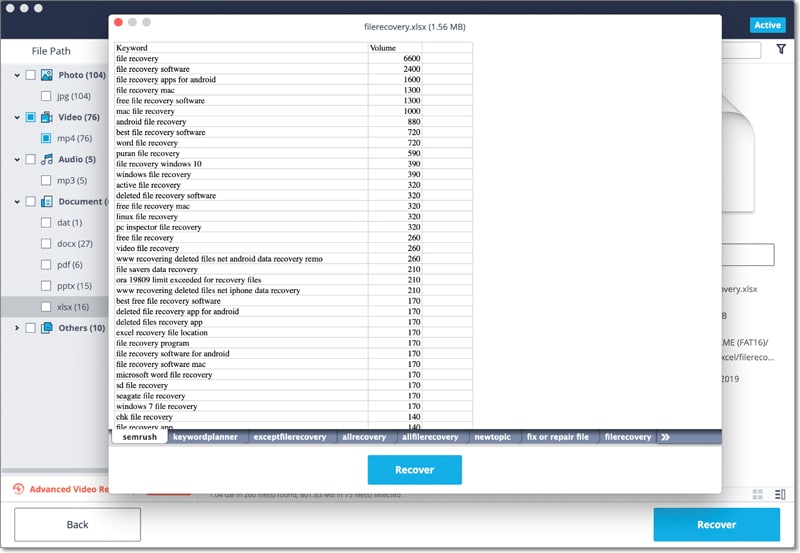FAT is acronym for File Allocation table and it is one of the different file organization methods that your system uses to store data. It is crucial to understand these different file systems so that you can be able to easily recover missing data when it does happen. Of all the FAT systems available the FAT32 system is the one that is in current use, FAT16 and FAT12 having been eliminated. The FAT32 is a derivative that supports drives with over 2GB of storage. FAT32 allows for smaller file clusters to be used because it can contain more than 65,562 clusters. The result it usually more efficient storage space allocation. In this article we are going to show you the easiest way to do FAT32 data recovery. But let's first begin with the common reasons why you would lose FAT32 data.
Part 1. The Easiest Way to Perform FAT32 Data Recovery
The simplest way to recover missing FAT32 Data is to use a data recovery program and while there are very many data recovery programs that can help you do this, only one make so easy you would be able to recover data even if you have never used a data recovery program before. This program is iSkysoft Data Recovery for Mac (or iSkysoft Data Recovery for Windows).
Key Features of Recoverit (IS):
- This software can help you recover different file types including documents, photos, video, music, email, and archive files, etc.

- It is 100% safe software and you do not need to worry about data corrupted. You can recover data in high quality.
- It Supports Mac OS X 10.6, 10.7, 10.8, 10.9 (Mavericks), 10.9.5, 10.10 (Yosemite), 10.11 (El Capitan) and 10.12 (macOS Sierra).
- Also it has Windows version which supports Windows 10 / 8.1 / 8 / 7 / Vista / XP / 2000 (32&64 bits).
Step-by-Step Guide to Do FAT32 Data Recovery
Step 1 Install This Data Recovery Software
Firstly, you should go to iSkysoft official website and download Recoverit (IS) on your Mac. Then try to install this program in another drive which doesn't have your lost data. After that, please launch it and you will find 6 file type options from the main interface. Now you can choose the type of files you want to recover and click "Next" button.

Step 2 Begin Scanning Process
Then you will navigate to a window showing all the drives. Select the drive which contains the lost data and click "Start" to begin scanning process.

Part 2. Full Reasons for FAT32 Data Loss
The following are just some of the common reasons why you may lose FAT32 data.
1. Accidental Deletion
We’ve all done it, you mean to issue a different operational command but instead you hit delete and before you can react, everything is gone. If you hadn’t backed up the data or there was data on the drive that you had yet to include in a backup, you will need to employ a good data recovery program to get the files back. This is the most common of data loss for all types of files not just the FAT32 system and don’t worry, everyone has done it before., we’ll share one with you that is more guarantees you will get your data back.
2. Virus Attack
Sometimes the data loss can be due to a virus attack. These virus attacks can lead to the destruction of large files or even the damage of an entire partition. In this case even if you do find data recovery software to help you get the missing files back, it may be a good idea to invest in a good anti-virus program to eliminate the virus and avoid the same problem in the future.
This one can be particularly difficult for you because it is not your fault. A good anti-virus program should prevent this from happening again but you will need to keep reading for a way to recover the missing data.
3. Improper Disk Management
This can happen in one of two ways; a user can choose a defective management tool to solve a disk problem or a user can use the right program but misuse it leading to data loss in varied degrees.
4. FAT32 to NTFS Conversion
In order to work through the imitations that FAT32 can sometimes have, most people will attempt to replace the old FAT32 partition with the newer, more advanced NTFS partition. This process almost always involves reformatting the FAT32 partition. Needless to say, formatting the drive results in total data loss. But some users may lose important data due to a failure to back up the files before formatting or a damaged or incomplete backup.
Data loss can occur even if users decide to directly convert the FAT32 to NTFS directly because sometimes the conversion tools used can result in data loss.







